Defiant Ford defends ‘most successful ad in history of North America’
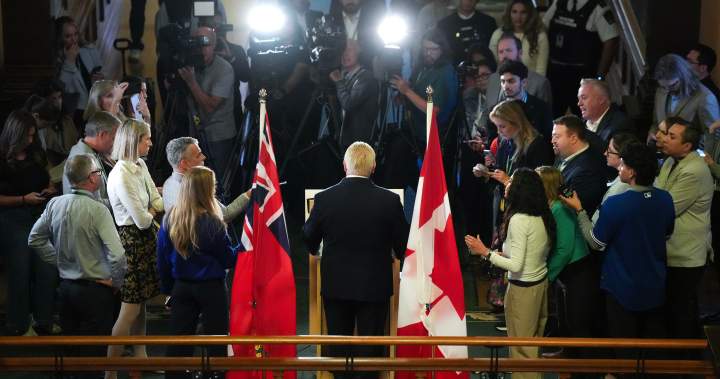
A defiant Doug Ford said the commercial his government launched last week, to the fury of United States President Donald Trump and derailing trade talks, has “achieved” its goal and will now end.
For the first time since Trump called off trade talks with Canada in response to the Ontario government commercial, the Ontario premier stood in front of journalists to proclaim the $75-million campaign a success.
“We generated a conversation that wasn’t happening in the U.S.,” Ford said. “The message is very clear: protectionism does not work and that’s the message we have for the American people.”
The Ontario commercial, which features former Republican president Ronald Reagan’s views on tariffs and protectionism, created an international stir when Trump terminated trade negotiations with Canada and applied a 10 per cent tariff on Canadian exports to the United States.
Prime Minister Mark Carney suggested the commercial was also the sole reason for the “unexpected twists and turns” in the talks, and emphasized that while he’s open to “unsolicited advice” on those discussions, the negotiations are the “responsibility of the government of Canada.”
“There were a series of very detailed, very specific, very comprehensive discussions, negotiations … up until the point of those ads running,” Carney said during an international summit in Asia. “I would suggest you take the president at his word.”
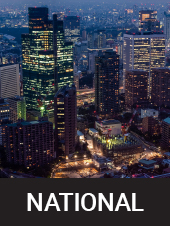
Get daily National news
Get the day’s top news, political, economic, and current affairs headlines, delivered to your inbox once a day.
After talks were terminated late on Thursday night, the Ford government locked down. Two news conferences were cancelled Friday morning, and the premier didn’t appear at Queen’s Park all day to answer questions.
By Monday, however, Ford went back on the attack. He told his critics during question period the commercial was “the most successful ad in the history of North America” and faced questions from journalists.
Faced with questions about how his commercial had apparently derailed trade talks he was not officially party to, Ford said the prime minister had seen the slot before it aired.
“He saw the ad before I put it out, so did his chief of staff — they both saw it,” the premier said.
After speaking to the Queen’s Park press gallery at the legislature, Ford was scheduled to make the rounds on American television, including ABC, CNN and NBC.

As he defended the commercial, Ford hardened his stance on trade talks, repeatedly suggesting the negotiations led by Carney could hurt his province.
“My job is to protect jobs here in Ontario, and one sector — there’s many sectors — one is our auto sector,” Ford said. “Hide nor hair, nobody’s speaking about auto, I’m speaking about auto, Lana Payne, the president of Unifor, is speaking about it.”
Ontario’s auto sector — which the federal and provincial governments have spent billions propping up — has been struggling under the weight of tariffs.
Recently, Stellantis announced it was moving 3,000 jobs from Brampton, Ont., to the United States, while General Motors announced it was ending production of electric delivery vans in the province.
The company tapped to produce the commercial that created the furor has ties to the Progressive Conservative party, Global News previously reported.
© 2025 Global News, a division of Corus Entertainment Inc.

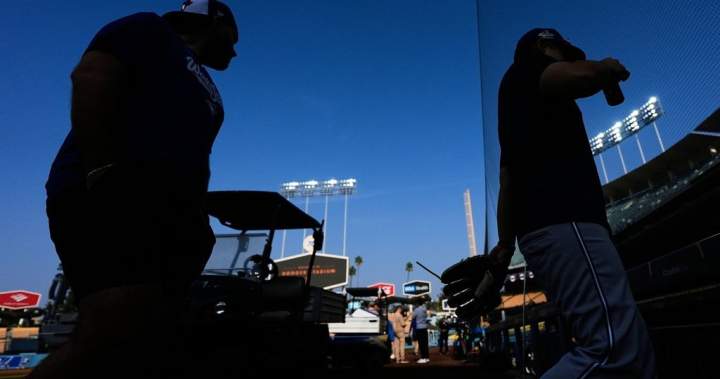
Patience is a virtue but it didn’t pay off for the Toronto Blue Jays fans who stuck it out until almost 3 a.m. at Rogers Centre for a watch party that saw more than 27,000 fans pack the stands.
The Blue Jays fell to the L.A. Dodgers 6-5 at Dodgers Stadium in Game 3 when Freddie Freeman homered in the bottom of the 18th inning. Though several hundreds of fans had emptied out of Rogers Centre by game’s end, the remaining fans roared in disappointment when the game came to a close.
“(It’s) pretty brutal honestly,” said Jays fan Zaul Fereidooni right after the last out.
Fereidooni attended Game 1 and when he heard the stadium was hosting watch parties for fans during away games he jumped at the chance to get a few of his friends out to keep up with the World Series. Tickets to Rogers Centre watch parties were $15 — a much cheaper ticket than any games at home.
It’s been a much better way to enjoy the post-season, Fereidooni said.
“(With) how exclusive the World Series is, an opportunity to come for $15 was pretty good.”

Get daily National news
Get the day’s top news, political, economic, and current affairs headlines, delivered to your inbox once a day.
Karim Alzanoon and Noah Cappon who tagged along with Feridooni agreed. The friends said energy was high among the diehard fans who stuck around — which was part of what kept them there until the end of the game.
“It’s still worth it even though we have to get up on a few hours,” Cappon said.
Single-game tickets for the World Series sold out in about an hour after going on sale last Tuesday. As of Monday night, the cheapest Game 6 resale ticket for general admission was more than $1,800.

Ontario Premier Doug Ford chimed in with his own remarks about high ticket prices before the World Series began, saying even he would be watching at home to avoid high ticket prices.
Ticketmaster said in an earlier statement that it doesn’t set or control World Series ticket prices.
Jays fans Adam Yang and Cristian Gonzalez said their Monday tickets into Rogers Centre felt like they were two baseball games in one, given how long the game ran.
“This the closest thing we’ve been to a game without going to an actual game. It’s the same vibe,” Yang said.
The two men, born and raised in Toronto and lifelong Blue Jays fans, stayed until the last out. Gonzalez said his father was also in tow earlier in the game, but left a little early.
Gonzalez said his dad followed the Jays’ back-to-back World Series runs in 1992 and 1993. Gonzalez said he wasn’t yet born the last time the Jays were on the world stage and it was special to share in the moment with his dad.
Watch parties will be held at Rogers Centre for Games 4 and 5 of the World Series, with ticket proceeds going to the Jays Care Foundation. The City of Toronto is also hosting free public viewing parties at Nathan Phillips Square.
The Jays are now down 2-1 in the best-of-seven matchup. Game 4 is scheduled Tuesday at Dodger Stadium in Los Angeles.
© 2025 The Canadian Press
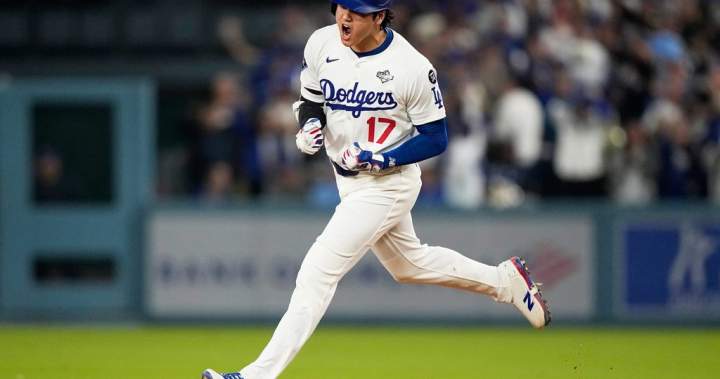
How crazy, how remarkably epic, was Game 3 of the World Series?
It was this crazy: Shohei Ohtani, the greatest baseball player in the world, had one of the greatest World Series games of all time, and it ended up feeling like a side note in a game that was really two games in one.
Ohtani, the otherworldly Japanese superstar, went full alien on Monday night, belting two doubles and two home runs, the second of them tying the game at 5-5 in the seventh inning. It was operatic, and then it became unrelenting.
An entire, additional game unfolded. That one evolved into a chess match that was also somehow a war of attrition, and it ended with a home run off the bat of Freddie Freeman, a solo shot in the bottom of the 18th inning that finally put to bed a game that last almost seven hours. It was the second-longest game in World Series history.
The 6-5 win for Los Angeles gives the Dodgers a 2-1 series lead and leaves Toronto having to summon the energy, and the emotions, to recover from the heartbreaking finish — and with the time zone working against them.
It was playoff baseball at its high-wire, stomach-churning best. Or worst, depending on your view of such things.
There were 31 hits between both teams, and 19 pitchers churned out. Not a typo: 19 different pitchers.
There were spectacular defensive plays, with runners from both teams thrown out on the base paths in crucial, game-changing spots.
There were what felt like countless deep fly balls off of Dodger bats, every one of them looking like it might end the game until it settled into a Blue Jay glove.

Get daily National news
Get the day’s top news, political, economic, and current affairs headlines, delivered to your inbox once a day.
There were stressed-out managers, as Toronto’s John Schneider and L.A.’s Dave Roberts tried to match each other with bullpen moves, even as neither of them had been very confident in their relievers to this point in the playoffs.
There was even an appearance by Clayton Kershaw, the Dodgers legend who is retiring at the end of the season and who has a history of playoff disasters.
With the bases loaded in 12th inning, he came in and retired Toronto’s Nathan Lukes, who grounded out. Sure, why not throw a Kershaw redemption arc in there? The game had everything else.
By the time it ticked into the 13th inning, the Jays had lost George Springer to injury, replaced Bo Bichette with a pinch runner, replaced Addison Barger with a pinch runner, and replaced Alejandro Kirk with a pinch runner.
They had emptied all of their bench, and most of their bullpen, in trying to outlast the Dodgers.
The problem for Toronto became evident as the innings wore on: instead of guys like Bichette and Barger at the plate in big spots, it was part-timers like Myles Straw and Isiah Kiner-Falefa forced into high-leverage at-bats.
This is not how Schneider would have drawn it up. This is not how the front office would have drawn it up. This is definitely not how Jays fans would have drawn it up.
The Jays were a heavyweight fighter that had thrown punch after punch, and absorbed blow after blow, but were still wobbling in the centre of the ring. Could they make it to the final bell?
They could not.
After Toronto’s Eric Lauer pitched a sparkling 4.2 innings, he gave way to the last reliever in the Jays bullpen: Brendon Little, last seen blowing a lead against the Seattle Mariners in Game 5 of the ALCS.
He was the last guy that Schneider wanted to use in a tight spot. Little worked his way out of trouble in the 17th, but Freeman rocked him for the game-winning homer to lead off the 18th.
The Jays were not without their big moments on the night.
There was a three-run home run from Alejandro Kirk that erased a two-run Los Angeles lead in the fourth inning, and a wild sprint from Vladimir Guerrero, Jr., in the seventh inning, in which the Toronto slugger raced all the way home from first base on a Bichette single that gave the Jays a 5-4 lead.
But that lead was brief, because on this night the Ohtani onslaught was inevitable.
Schneider, the Jays manager, had the option of intentionally walking Ohtani in the bottom of the seventh inning, with one out and none on, but he let Seranthony Dominguez pitch to him.
For reasons known only to Dominguez, he started off with a fastball right down the pipe that Ohtani sent soaring into the L.A. night.
From there, the game became exhausting just to watch, let alone participate in.
It had been relentless, big play after big play. Barger threw out Freddie Freeman at the plate with a rocket from right field that kept the Dodgers from a potential big early inning. Both teams had runners thrown out at third base in the late innings, each time snuffing out possible rallies. Ohtani, for all of his brilliance, was caught stealing in the ninth inning.
And then the Dodgers made the most significant throw of the night, cutting down the Jays’ pinch runner Davis Schneider at home plate in the 10th inning, after he tried to score from first base on Lukes’ double into the right-field corner.
It had worked two innings earlier when they sent Guerrero all the way home from first base. It did not work with Schneider. Such are the moments on which playoff baseball games turn.
Ohtani would end his night, after the four extra-base hits, with five walks, four of them intentional. And the most incredible thing about all that?
He’s the starting pitcher against the Blue Jays on Tuesday night.
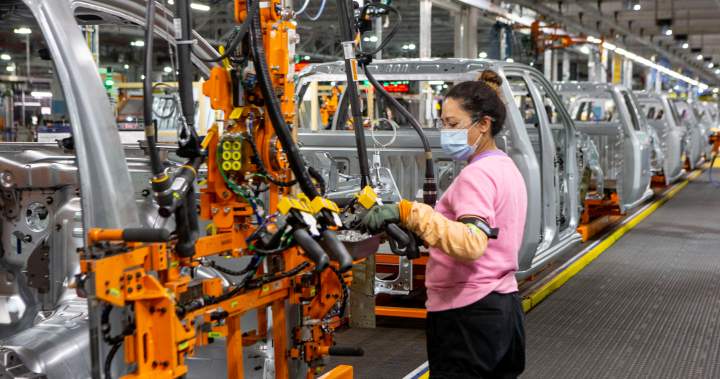
Canada’s automotive industry is sounding the alarm that it would be “very damaging” if more tariffs are put into place — and also that some vehicle manufacturers are voicing concern about being seen as “too American” in the tense climate.
This comes after U.S. President Donald Trump abruptly cut off trade talks and declared he would add a 10 per cent tariff on top of current levies in place on Canada — a move Trump said was because of an anti-tariff commercial produced by the Government of Ontario.
A panel of representatives from Canada’s automotive sector met with a federal standing committee in Ottawa Monday to discuss the “challenging” environment that tariffs and the trade war have created.
“It would be extremely challenging if more tariffs go into place, particularly if they apply to all products that currently qualify under CUSMA,” said Brian Kingston, president and chief executive officer of the Canadian Vehicle Manufacturers’ Association (CVMA).
“So we don’t know yet how these will be applied, but an additional 10 per cent will be billions of dollars in costs onto this sector (automotive) and other Canadian sectors. So very damaging and hopefully we can find an off-ramp.”
Trump was not clear if the additional tariffs would apply to all sectors, or specifically-targeted industries, and on Monday did not say when asked when those might go into effect.
Carney responded to Trump pulling the plug on trade negotiations, saying, “We can’t control the trade policy of the United States.”

Trump’s tariff policies mean products may face additional costs if they do not fall under the terms of the Canada-United States-Mexico Agreement (CUSMA), which is set for a formal review in 2026.
Companies in many sectors, including automotive, have been pivoting to find alternative trading partners and adjusting their supply chains to avoid, or at least minimize the cost impact from tariffs.

Get daily National news
Get the day’s top news, political, economic, and current affairs headlines, delivered to your inbox once a day.
Some car companies warned tariffs could see their profits drop by billions of dollars by the end of 2025, with some shifting or closing production in Canada, which has led to job cuts.
Stellantis revealed earlier in October that it was planning on moving production of the Jeep Compass from Brampton, Ont., to Illinois in the U.S. — leaving thousands of jobs at risk of being eliminated.
Kingston on Monday was asked about the job security for Brampton workers at the Stellantis facility, and he said “there are plans for the Brampton plant — it is not a plant closure,” without getting into specifics.
General Motors also said it is ending production of its BrightDrop vehicles in Ontario.
In light of the Stellantis and General Motors news, Industry Minister Melanie Joly formed a “response group” aimed at preserving jobs.
Kingston added that there could be further plant closures and potential job cuts “the longer time goes by without a solid trade deal” that makes Canada a “competitive” market for companies to invest in.
When companies are hit by higher costs, they typically will try to offset the hit to their profits by increasing prices for customers. This means by having to pay tariffs, companies like Stellantis may have to increase prices for car buyers.
“You’re going to see vehicle prices go up US$4,000, $12,00, $15,000 — I don’t think people signed up for that. That is a potential outcome, but I ultimately think we will find a landing zone,” Kingston said.
Huw Williams, the national spokesperson for the Canadian Automobile Dealers Association, told the committee one of his client’s concerns was how “a number of our dealers, Ford, GM and Stellantis are worried about the knock-on effect of being seen as ‘too American.’”
A recent Ipsos poll conducted exclusively for Global News showed six in 10 Canadians said they could never trust the U.S. again because of Trump’s policies.
Trump has also repeated rhetoric that Canada should become “the 51st state” to avoid paying tariffs.

The panel was adamant that the best way forward to support the Canadian automotive sector and its workers is to negotiate a trade deal that sees all tariffs removed for finished vehicles and components crossing the Canada-U.S. border.
“The best deal for Canada is a situation where we adhere to the rules that were negotiated under the previous CUSMA. If those conditions are adhered to, then that should be the basis on which we continue to have zero tariffs on automobiles going back and forth across the border — and that’s where we need to get to,” said David Adams, president and CEO of Global Automakers of Canada.
“I think some people are saying ‘that’s wishful thinking.’ Well, maybe that’s one of the reasons why the negotiations are taking so long is because that’s the ultimate goal here.”
Williams also suggested that having a long-term trade deal may be worth waiting for.
“We’re concerned about getting a long-term deal. Yes, we need short-term certainty, but the big prize out here is to make sure we have a CUSMA deal.”
© 2025 Global News, a division of Corus Entertainment Inc.
-

 Uncategorized5 months ago
Uncategorized5 months agoShop Proud, Eat Proud, Be Proud — Ottawa Canada Day Market This June 28th
-

 4 months ago
4 months agoRing of Fire road to bring prosperity to First Nation, problems for caribou: report
-

 5 months ago
5 months agoMeasles circulating in northeastern B.C. community, health officials warn
-

 5 months ago
5 months agoCanada’s world junior trial saw juries tossed, intense testimony. Here’s a recap
-

 4 months ago
4 months agoFormer major leaguer, Jays doctor Ron Taylor dies
-

 4 months ago
4 months ago161 bricks of suspected cocaine found on truck trying to cross Canada-U.S. border
-
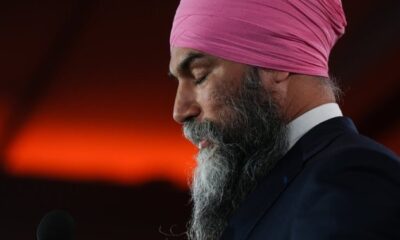
 4 months ago
4 months agoJagmeet Singh apologizes for attending Kendrick Lamar concert after Drake calls him out
-

 5 months ago
5 months agoAnishinabek Nation chief says he briefed Ontario police on protests against Bill 5






